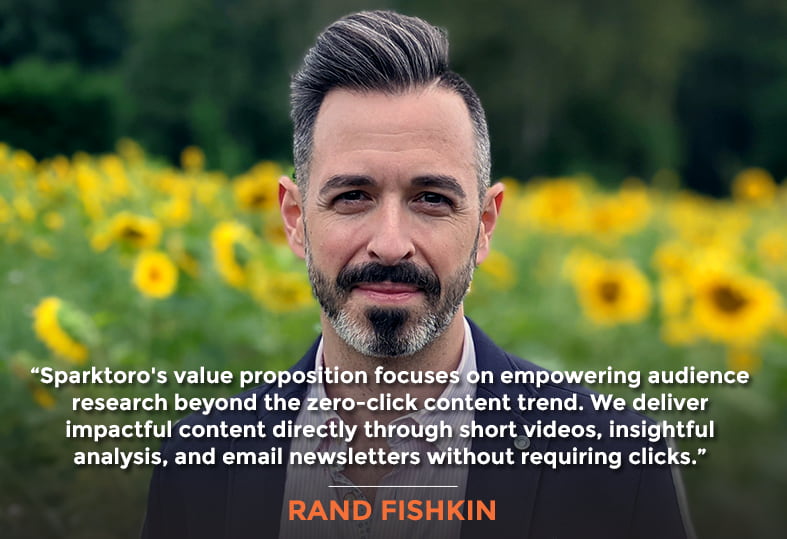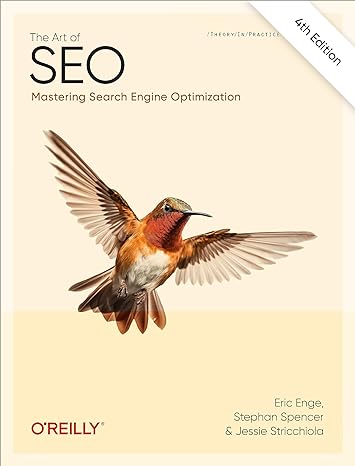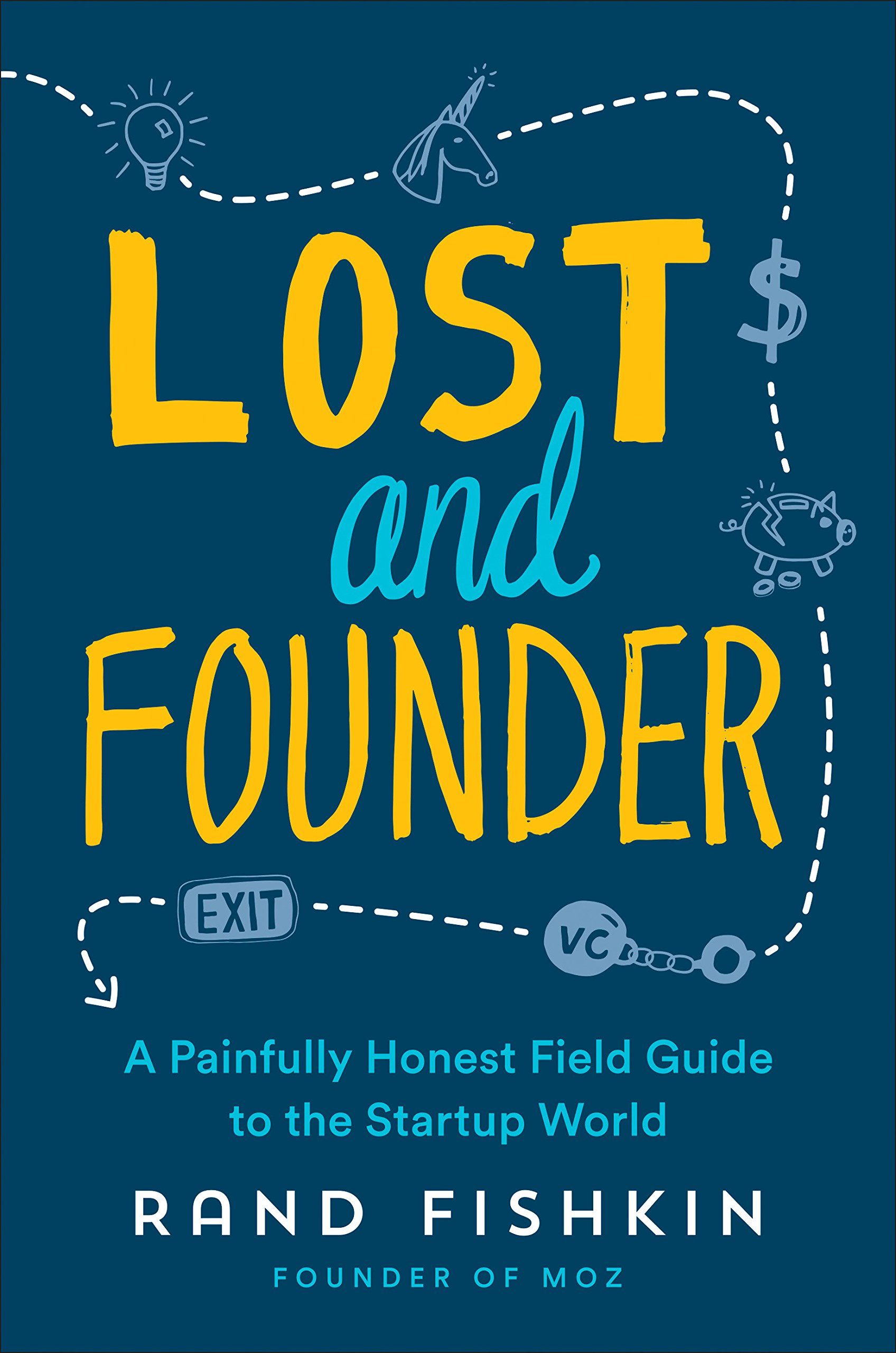In a world where monopoly power seems to reign supreme, and the digital landscape is as unpredictable as a toddler’s mood swings, marketers are left wondering how to navigate the treacherous waters of search engines, social media, and AI without losing their sanity (or their jobs).
Fear not—Rand Fishkin, co-founder and CEO of SparkToro and Snackbar Studio and my co-author on the first two editions of The Art of SEO, is returning to the show to tackle the tough questions and share his wisdom.
In today’s episode, Rand and I engage in a lively discussion about the impact of AI on the marketing industry, the future of search engines, and the importance of understanding your audience in the era of zero-click searches. We also explore the rise of new social media platforms like Threads and explore the strategies marketers can employ to succeed in this dynamic environment. Rand shares practical advice on creating engaging content, leveraging influencers, and adapting to the changing preferences of online consumers.
If you’re excited to gain valuable insights and actionable strategies from one of the industry’s most respected (and entertaining) thought leaders, a must-listen episode of Marketing Speak is underway.

In This Episode
- [02:32] Rand Fishkin discusses the factors affecting the marketing landscape: COVID, AI, and the rise of zero-click content.
- [07:43] Rand shares views on AI’s role in marketing and compares it to past technology trends. He points out the limitations of AI, like ChatGPT, in specific tasks.
- [14:47] Rand explains how zero-click content plays a role in link algorithms.
- [18:19] Rand shares the use of short videos for marketing tactics and strategic ideas and shifts in content consumption preferences.
- [35:09] Rand describes the overview of SparkToro’s founder-friendly model, funding documents, and reluctance to sell.
- [40:02] Here’s how you can connect with Rand Fishkin.
Rand, it’s so great to have you back, and I’m really excited to hear what you have to think and say about this crazy stuff that’s happening in the world, not just in marketing but in big monolithic companies like OpenAI and Google and Microsoft and so forth, and how this is all going to play out for us business owners, marketers and consultants. Welcome to the show.
Thank you, Stephan. I appreciate you having me on. And yes, I have much to say—many passionate thoughts on this matter.
Yeah, so let’s start there. Let’s start with whether the existential threats you see are credible and real and those you think are mirages and what we should do about them.
Many companies saw massive adoption of the digital world, resulting in a huge boost in digital marketing.
Yeah, so interestingly. Let’s see. Many people’s assumption or theory about what’s disrupting marketing right now is that it has something to do with AI, right? That AI is somehow overturning the industry. Maybe it’s replacing jobs. Maybe it’s putting people out of business. Maybe it’s responsible for destroying value in all these agencies and consulting worlds. Maybe it’s what’s causing CMOS to have such short tenures. I don’t actually agree with that.
I think that three things are going on behind the scenes. The first one is, macroeconomically, the COVID, which I will call bump and slump. So this is essentially that during COVID, tons and tons of companies saw massive adoption of the online and digital worlds. Digital marketing, as a result, got a huge bump. Every business in the world that wasn’t online had to get online. Everyone that was online got way more customers.
The world just became Internet-centric, and as a result, many people over-invested in the trajectories of their budget. A slump followed this bump because in 2022 and 2023, and certainly this year, things are, if not returning to normal, returning to a new normal much less offline than would be anticipated if you were to take the average growth rate between 2010 and 2018.
That’s what, realistically, the last few years looked like with this outsized bump. So, now that slump is causing a ton of businesses to retract their investment. Simultaneously, the second big factor is the end of cheap money. I’ll give you an example. So, Stephan, SparkToro is a weird kind of company I run; one of the companies I run is weird, too. But Sparktoro had. We had about three-quarters of a million dollars in the bank, and I talked to my co-founder, Casey, and we were like, “well, should we try and make these investments? Maybe we should take a risk by hiring someone new and putting some money into sponsorships, advertising, or trying to get new data.”

And then, we looked at the interest rates on the bond yield. US treasury bonds, right? Which is basically zero risk. We can make 40 grand this year by throwing that into T-bonds. You know what? Let’s do that. Because we’re an LLC, the profits flow directly to us. Let’s just put the money in a T bond, and then we’ll figure out our strategy at the end of the year and see if we get to a place where we really want to make those investments, and many companies are like us.
They put their money into this safe, interest-earning place, whereas before, they would have spent it in the economy. This is intentional, right? The Fed, the government, and the Biden administration want to slow down consumer spending and economic growth because inflation got out of control. It looks like it’s having some success, although there are always challenges with this kind of thing. So that is slowing things down.
Number two, and then number three, what I’m going to call the rise of the zero-click universe. Zero-click everything, including every single platform: Facebook, Google, Instagram, Reddit, YouTube, LinkedIn, TikTok, and Mastodon. Well, Mastodon’s the exception. But all threads, all of these places, all of these places have biases against links. Google answers more and more queries without requiring a click. Facebook, Reddit, Instagram, LinkedIn, Twitter, and Threads all have biased algorithms against links.
If you put a link in your post on Threads, it will do worse than if you don’t. in this universe of zero-click, everything is really dragging down. Many marketers have spent the last quarter century being trained to measure and invest based on the traffic they could drive from each source. That is creating a ton of frustration, misattribution, and a whole bunch of problems as well. Those three things, not the rise of AI broadly, are responsible for what we see in the marketing world.
Interesting. Yeah, we’ll have to dig deeper into that. But first, what is your position on AI? Is it an existential threat, or is it one of the best things that could have possibly happened to humanity?
Anytime a big new technology launches, like the mobile phone, social networking, or the Internet, the answer is always a little from column A and a little from column b. Right. I would say that the Internet disrupted many businesses, but it didn’t destroy economic value. It gave many more jobs all over the world. It sort of reduced friction of commerce and connection. It created plenty of problems and no arguments but solved many problems. AI is probably pretty similar to that. I’ve argued that AI is a lot like the rise of spreadsheets in the 1980s.
AI is a lot like the rise of spreadsheets in the 1980s.
It just takes a ton of work that was manual and awkward and a pain in the butt and took particular kinds of skills and slide rules and graphs and whiteboards, well, blackboards, and made it much more automated, much more high quality, much more efficient. I think that’s what AI, well, large language models and generative AI, broadly speaking, do they make many kinds of work potentially more efficient? Is that transformative? Yeah, I think it is for a lot of people.
I use some AI things, I’ll be honest. We use AI a little bit. Well, OpenAI’s API, anyway, inside SparkToro for some types of queries where we can’t get a good match on an audience, and we try to use OpenAI to essentially broaden that audience to understand who the people in that group might be and then use our normal heuristics to apply that data. It’s handy for that. We use it on about one in ten to one in 20 unclear queries from a user. It’s great, really solves that problem.
I use it for content classification; it’s nice for that. To be honest, I’ve tried to apply it to a whole bunch of other things. Someone emailed me yesterday, Stephan. They were asking about restaurant recommendations in Seattle, and they said, “Hey, ChatGPT told me that these are good restaurants to go to for a big group. Geraldine and I looked at the list and said, “Oh, my God, this is awful.” This list is horrifying. Some of the restaurants would technically accommodate the group, but most of the problem is that large language models show words that commonly come after other words. If you would like a good restaurant experience, you probably don’t want restaurants that are most commonly mentioned on the Internet when associated with a city.

Right? You’re looking for something unique, something really high-quality. So, ChatGPT has just given terrible answers. Anyway, we sent them a good restaurant list. If you want a good restaurant list, I’ll send it to you. So, transformative? Yes. Existential threat? I don’t think so. The best things in sliced bread, maybe for some people.
Yeah, well, I think we’re going to be blown away by what’s coming, but yeah, I think my perspective on this is to maintain a level of positive expectancy because you create your reality. So, if you can look at this as a positive thing and not as just a ticking time bomb, you’re going to end up with a happier time.
Many businesses can benefit from using AI to solve the problems that AI is best at solving.
Yeah, I think that’s reasonable. I mean, I think of it a lot. Like, do you remember mobile apps? I remember we were at all these conferences, right, Stephan? You and I had this conversation probably years ago, the rise of mobile apps from 2008 to 2011. And there were always panels and talks at these conferences, tons of content about how every business needed a mobile app. Now, you have to get a mobile app. And the reality was, that was pretty dumb. 99% of businesses don’t need a mobile app. The average consumer only has about 40 apps on their phone.
Probably used three of them, maybe four.
They probably use three of them. Most apps should be a really good mobile website, right? But for some reason, the app world and adoption were massive. My suspicion is AI is a lot like this. Many businesses can benefit from using AI to solve the problems that AI is best at solving. Should everyone completely adopt AI for every one of their processes? No. The right way to think about any new solution is to ask what my biggest problems are. Can that solve my biggest problems? Is it the best solution for my biggest problems? If so, great. Prioritize it.
If not, what are you doing? I don’t know. I don’t think this is NFTs, but the hype cycle around it sounds a lot like NFTs, and that scares me.
Do you own any NFTs?
Thank God, no. I did not buy into that hype cycle, I’m glad to say.
Okay, what’s your position on Threads and X, formerly known as Twitter?
Yeah, so I think Twitter and threads. The nice thing is there’s data there. I’ve seen some estimates that threads already have more active users than Twitter. I don’t think that’s correct. The data we have access to, which is we buy clickstream data from Dados’s panel, is that they’ve got a little over 10 million devices in the United States. So good coverage. Right? We’re talking about a significant number of devices, and that’s fairly representative of what we can see of the broader Internet world. It has its biases, of course, like any dataset. Still, it is similar to what Comscore was doing a few years ago or what Similarweb has, and what I see is that Threads have about somewhere between a third and a half daily active users that Twitter does.
But it is growing, whereas Twitter is obviously shrinking. You can see that the activity that the number of daily active users, the number of pieces of engagement that your posts might receive on Twitter, especially if they contain links, is dropping pretty dramatically and down about 35% from November of 2022 when Elon bought it. So, I think the answer is that if current patterns continue, Threads will be the primary or dominant text-based social network within a few years. Bluesky and Mastodon. I love Mastodon. I wish Mastodon was winning. I think it’s the best one, but it’s not as much as I would like to hype it over the others. It looks like Facebook really knows what it’s doing here.
The fact that they can insert Threads into Instagram, where they already have over a billion active users, of course, that’s just an unfair competitive advantage over everyone else. Twitter, the owner, is obviously just kind of melting down and going off the crazy rails. And, you know, I go to my feed; I log in about once a week nowadays, whereas I used to log in multiple times a day. And, like, all my notifications were coming from, like, Tucker Carlson and people who think Jews shouldn’t exist. I’m like, “I don’t think there’s a platform for me anymore. I don’t know why these notifications are in here. I don’t follow any of these people. It’s a strange, strange place.”
I suspect it’ll continue to last for a while longer because momentum and brand are extremely and incredibly powerful. But eventually, if things continue as they are, it’ll enter the death cycle. I will say Threads is a good place to adopt early. Right? I get it when it comes to link sharing; for example, if I share a link on Threads and Twitter, I have 100th followers on Threads that I do on Twitter. So, it is about 5000 to about a little, just under 500,000 on Twitter. I get more clicks and more visitors from a link shared on Threads.
I share content without the link first, and after it starts getting engagement, I will reply to that post with the link.
But then you said you get demoted by the algorithms when you share a link, regardless of the platform. So, what’s your workaround there?
Yeah. So, about playing the link algorithms, this goes to explain how zero-click marketing as a whole can work. One of the things that I try to do is to share content without the link first. So, I might take a screenshot of a piece of content I’ve written, a video, or an article I want to share, and I will post that with no link. After it starts getting some engagement, I will reply to that post with the link. This tends to help drive some of that as a reply to my thread or tweet on Twitter. I don’t know if he’s still calling them tweets, but whatever he calls them now, and maybe a Z, those work pretty well.
Same, sorry, maybe a ZT, I don’t know. I don’t think he’s renamed.
Anyway, LinkedIn works in the same way. This can go quite well. You can see people doing this on Reddit, where they’re all essentially I follow. For example, a lot of people are in the indie games subreddit. You can see that what they do is they’ll post a video of their game, and then someone will ask for the Steam store link below, and then they’ll reply to that Steam store link with “Oh yeah, here’s the URL if you want to check out the game.” Very smart, right? You play to the algorithm, the system, and the user preferences, and you sort of give that link after it’s been requested.
The other thing that I do is something called engagement streaks, and I would recommend this to a lot of folks as well, which essentially gets the algorithm to prefer your content. So I might post three or four things that I know will be relatively high engagement, or I suspect and hope will be relatively high. After the algorithm is like, “Oh man, Rand is on a roll; his content is getting high engagement.” Now I’ll share a link, and the algo preference will still show that link to a substantive number of people, much more so than if I had just shared it without that engagement streak running first.
The key to effective content marketing is not just quality but also resonance with the audience you aim to reach. Share on XDo you have a couple of examples, like case studies of zero-click marketing and engagement streaks in your marketing for SparkToro or customers or users of SparkToro who have shared strategies with you?
Yeah. Interesting. So the second one, not so much because of full disclosure, SparkToro’s value proposition, the thing that helps people with his audience research more so than zero-click content, which I think would be a tough thing to help someone with from a software perspective. It’s more of a consultative type of relationship that probably helps. But yes, if you look at nearly all the marketing we do for SparkToro, you can see these two tactics being heavily engaged in tandem.
We also use some tactics in our email newsletter, so we try to essentially provide the value inside the newsletter without requiring the click. Rather than making our email newsletter traffic-driving-centric, you can get, let’s say, 75% or 80% of the value in the newsletter without ever clicking on a link. This is something Amanda has intentionally done over the last couple of years, turning the wheel towards zero click value in all our content.
We’re in a new age of consumption preferences, and those consumption preferences are short and snappy.
We also do this. My most effective tactic for this is Stephan; you can see this quite a bit in my LinkedIn feed videos. So I will film one to three-minute-long videos. I will sometimes put them on Twitter, Threads, Mastodon, and other places. Those videos will show off a marketing tactic or a strategic idea. They’ll analyze someone’s website and someone’s audience. They’ll use Sparktoro sometimes or not sometimes. It’s just kind of, “Hey, here’s this valuable way to think about solving this marketing problem.”
When I share those videos, the full video is online and in the feed. It requires no click to go to YouTube, a Wistia link, or the website. For folks who’ve been following me for a long time, you might know that I used to run a company called Moz, and for about a decade there, I ran a very popular video series called Whiteboard Friday. I would argue that today, Whiteboard Friday, would not work so well. It is a 10 to 15 minutes long video. Those videos live on Wistia video embedded on Moz’s website. It’s tough to drive traffic there unless you already have tens of thousands of subscribers to the blog and the Whiteboard Friday video section, which Moz does.
Right. That was something I built up over the years I was there. But nowadays, launching something like that is really difficult. We’re in a new age of consumption preferences, and those consumption preferences are short and snappy. Give me the value right in my feed. Don’t make me click on something. Sadly, I would say that even if all the social media algorithms were not biased against links, and even if they were super link-friendly, people would prefer content in their feeds. They want it delivered right there.
They don’t want to have to click. They don’t want to go off the site. You get the security warnings, and you get to accept all the cookies and all those kinds of barriers and friction. People want to see it right in the feed. So, that’s what we create and what we instead rely on. What I rely on is someone’s going to watch that video. And if that thing appealed to them, they might Google SparkToro or go right to sparktoro.com. They’ll type it into their browser and they’ll try out the product.

The frustrating part is that I can’t measure it right or attribute it. I can see a lift, “Oh, more people tried SparkToro this week than last week. People tried this particular section of SparkToro. Okay, that’s probably tied to the video I put up yesterday or last week. Great.” But what I can’t say is, “Aha. LinkedIn drove this many signups. Twitter drove that many signups. Threads drove this many signups” That’s just the new reality.
So what’s the reality now in terms of used to espouse 10x content pieces and having, I don’t know if the skyscraper is your analogy or someone else’s, but having something that is markedly better than everything else on that same topic out there, that kind of stands above and apart from everything else, so much better. Is that still a valid strategy these days?
God, I wish I could say yes. I wish the answer was yes. But if you look at what does well and what’s popular, you will not see 10x. Right? So, I think it would be disingenuous to recommend that as a tactic. It used to be a really good way to outrank your competition in Google, producing things that were way better quality, way more in-depth, way more data, way more richness, way better visualized. All those kinds of things used to drive a lot of better rankings in search. That is not the case anymore.
Not all businesses should adopt AI for every process. The key is to identify your biggest challenges and determine if AI is the best solution for those specific issues. Share on XRight. You can see analysis after analysis, essentially. Now, Google is a big brand preference. So if you want to succeed, put your mediocre to crappy content that you didn’t put much effort into on a big, powerful website that ranks well for lots of things in that sector already; you’re going to do pretty well. That sucks. It’s sad and frustrating. I also think it’s a risky vector for Google themselves. I think they’re opening themselves up to some significant risk, whether it’s an AI-driven search engine or some other solution.
Right. People have been talking about how younger generations use social media, primarily Instagram and TikTok, especially to find answers to questions rather than going to Google. I don’t think that’s nearly as popular as popular media would have you believe that the statistics don’t bear it out. But I do think it’s a real phenomenon that does happen sometimes. And I don’t know, if I were Google, I’d be nervous about that.
Yeah, I would be too. And I think that it’s a challenging time for marketers to compete and do SEO properly but not give up on their ethics. So, if you want to play the game dirty, you can win. You can find those high-authority sites and become a regular contributor to them. You can also create tons of mediocre content and get that to rank. But then, sites that have amazing content and are very niche-specific will get buried.
The right bar to get content marketing that works well is a combination of quality, yes, but also resonance with the audience.
Yeah, I’d argue that the right long-term play is to produce that high-quality stuff, but don’t just think of it in terms of quality. I think that quality is the wrong bar. I think the right bar to get content marketing that works well is a combination of quality, yes, but also resonance with the audience that you want to reach. So, I deeply understand the audience, what kinds of content they want, where they like to consume it, how they like to consume it, what problems they’re looking to solve with it, and a lot of classic SEO. You will be misled if you watch my old whiteboard Fridays on 10x content.
You will be misled into thinking that the quality, depth, amount of content, and whatever amount of research you put into it, as well as the details and data, are the things that will drive your marketing. And I would argue that’s not it today. It’s what my audience really wants and cares about, what’s likely to be amplified by them, what they will share with all their friends, put in their feeds, their email newsletters, and specifically, the proportion of your audience that are amplifiers. Those are the ones that matter.
And can you use SparkToro to identify the amplifiers in your audience?
Let me just slip you a $20 bill there.
Yeah, I was just reading off the card you gave me.
Thanks, man. I appreciate you. So, yeah, SparkToro is designed to input an audience based on what they search for or their website or words that appear in their bio, their job title, that kind of thing. SparkToro will tell you the websites they visit. These are the keywords they’re likely to search for. These are the social accounts they’re likely to follow and engage with. These are the podcasts they listen to. These are the YouTube channels they watch and subscribe to.
These are the subreddits that they follow, all those kinds of things. So it’s behaviors and demographics. For many folks, this is the primary use case for SparkToro. I want to understand where I can reach my audience. That’s not just how I rank for some keywords in Google.
Yep. So, give us a case example or two.
Sure. Yeah. A friend of mine emailed me this morning. He is a culinary inventor, and he’s invented a new device that he hasn’t quite announced yet, but he is working on a marketing strategy for this. So, I signed up for SparkToro this morning and essentially described his use case to us, which was that I needed to understand where I could reach the audience that might be likely to not just buy my new culinary tool but amplify it.
Where can I go to get essentially press and media coverage? In the new world, there are all digital sources of influence rather than just whatever, such as the New York Times, better homes, gardens, and that kind of thing. SparkToro gave him some very nice answers to that question, which he then took to his marketing team. They are brainstorming essentially the content branding and positioning and outreach plan to reach all of these sources of influence so we can have a very successful launch.
You cannot rely on people who have already heard of your product and go to Google and search for the generic thing.
I think the launch is planned for early next year, but they’re doing a lot of their planning now, and I think this is a phenomenal use case. That’s exactly what you should be doing anytime you have a launch. How is this launch going to successfully reach the audience that I need to reach to convert them? The answer to that question is usually through the sources of influence they already pay attention to. For any given launch, what you cannot rely on is you cannot rely on people who have already heard of your product and go to Google and search for the generic thing, and then you rank highly for that. That is just not how any launches work. I shouldn’t say any.
There are a few microscopic areas where that can be effective. If you launch a new landscaping business in Seattle where that thing is dramatically in demand and there’s ten times more demand than supply, you can launch, you can probably get almost no sources of influence to mention you. So long as you have availability and are somewhere in the Google Maps listing, you will do okay.But for most other types of things where supply and demand are at a more even cadence, it is very difficult, very, very hard.
What have you done to leverage your marketing tool to find those amplifiers, market to them, create an irresistible offer for them, and assist them in becoming ambassadors?
Yeah, this is going to blow your mind, but I did a search for my audience who uses these words in their profile: director of marketing. I scrolled down on the podcast list, and I found this one called Marketing Speak, hosted by Stephan Spencer.
Yeah, funny.
I’m not kidding, by the way. You come up in the list of podcasts followed by folks with particular marketing titles, especially mid-level management, agency marketers, and that kind of thing. So I was like, “Hey, this is great. Stephan’s on the list. I’m going to see if I can get on his podcast.” No, full disclosure, friends: Stephan reached out to me, but we’ve known each other for a long time, right? We have a long friendship, but this is exactly what we’ve done with SparkToro, one of the other use cases that I really like. I don’t think many people use it for this, but I might recommend it to those who think about it.
We have used SparkToro to identify specific influential voices, people, and websites in the marketing world that reach our audience.
We have used SparkToro to identify specific influential voices, people, and websites in the marketing world that reach our audience. Then, we invited them to do webinars with us. Like, Lavall Chichester. Great example. Phenomenal marketer. I think he worked at a SaaS business in Nashville for a while. Now, he is running the growth skills agency, and we saw him show up on the sort of rising social accounts that were followed by many of our audience members. And like, man, this guy’s great. So we invited him to be a speaker at our digital event, I think last year, maybe two years ago, it was great. Like, he was incredible. He did such an amazing job that we ended up featuring his presentation, excerpting it, and using it in other places, and he was sort of showing off how he was using SparkToro to do some of this work that he’s been doing. It was just a perfect match.
If you’re a podcast host and you want to reach a particular audience, the guests you should invite are probably at least some of them. The people who reach the audience you want to reach will bring their audience with you. Right? Like, you know, that. Whatever. If you invite Asia Orangio or Ann Handley or, you know, people like that, right? Names that reach the audience that you already want to reach. I’m spitballing, but SparkToro could tell you whether those are the right people. Then, they will bring audiences likely to like, subscribe, listen to, and amplify the Marketing Speak podcast.
The same is true whether you run a webinar, an in-person event, or a YouTube channel—all those kinds of things.
Yeah. Now, you did a sponsorship with Jay Acunzo.
Yeah.
However. But he reached out to you. You would have known from doing your research with SparkToro that he was a good fit and that his audience and your audience, your ideal target audience, had a pretty significant overlap, right?
Yeah. We did that research previously and had invited him to speak again. I think he was a webinar speaker for us. So he did the Sparktoro Office Hours, which Amanda and I host every month or two, and did a great job there. Resonated with our audience. The SparkToro data showed that a lot of our audience also had a big connection to him. So when he reached out and said, “Hey, I want to help you kind of promote SparkToro V2. Here’s this plan”.

Yeah, we loved it. He’s launching a new sort of video and podcast series, and as part of that, he wanted an inaugural sponsor, and it just made good sense. We haven’t done that before. Again, this is our first-ever partnership of that kind. You know, it’s tough, Stephan. It’s tough to attribute how many people actually will come from that. But we can say we know how many people we’ve reached. Right? We can look at the episodes and the videos, the engagement, and the following, and sort of listen to hours and watch hours from Jay’s podcast.
I believe he says his last name is Acunzo. Jay shared that data with us, which was great. If that goes well, we can sort of get a sense of whether we can reach people scalably through that in the future. I think that in the next quarter, we might consider doing more of those. I know that. Who was I talking to? Oh, I was getting interviewed by Tim Soulo from Ahrefs. He said that this was a big part of their sponsorship and promotion strategy the last few years, that they invested in sponsoring sources of influence in their sphere and looking for the lift from that, but not trying to attribute every single visitor that came. I think that’s a smart strategy.
We're in a new age of consumption preferences: short, snappy content that delivers value right in the feed without making your audiences click on something. Share on XYeah. Speaking of Ahrefs, maybe they might be an acquisition, and you might be a target for them to acquire another tool.
It’s possible. I mean, you’re in this weird position. Casey and I had a chat about this. So, we have this strange funding structure at SparkToro, where, essentially, our investors put in 1.3 million. We spent a little more than half of that to launch our product, and then it took another six months to kind of hit break-even profitability. Then, we kind of built up our cash reserves and paid our investors back their original 1.3 million. And now, every few years, we can pay dividends, right? So, the dividends go out pro rata to the shareholders. So our investors own about 26% or 27% of the company.
Casey and I had this thing where we were like, look, if somebody offers us ten times revenue for SparkToro or 20 times revenue, we’ll probably think about it pretty hard. But if someone offers us the normal multiplier on a SaaS business, three to six times, we will make that in dividends in the next five years anyway. Why would we ever sell? What’s the incentive to sell the business? We love running it. We love operating it. Maybe that’ll change at some point, you know, get old. All this will go gray and white, and I’ll be like, “Okay, I got to get out of the game.” But until that time happens, it’s going to be tough to buy us. We have a very founder-friendly model, and I talked to you about this before we started the show.
I want to build staircases, escalators, and elevators so people can come up more easily than we did.
I’m really hopeful that more people will consider funding their businesses in this way because I think it’s so much friendlier than the Venture Capital classic VC model I used at Moz, which was a model in which 0.9% of companies beat their investment rate of return, and everybody else had a bad time.
Yeah.
This is not to say, Tim, that you’re not welcome to make an offer. You’re welcome to. Don’t let me stop you.
Yeah. Don’t you offer some templates or some information about how to implement this indie funding model that you used with SparkToro for somebody who wants to replicate it?
Yeah. So we’ve open-sourced our docs. We paid our attorneys extra to make an open-source version of the documents so anyone could use them. I recommend using an attorney, but you won’t have to design all your paperwork from scratch. A few companies have already used this to build their rounds, the accelerator, and fund tiny seeds, which Geraldine and I invested in. They also use SparkToro’s model as the basis for their funding structure. So, yes, I recommend this to a lot of folks. I think it’s just super friendly.
We don’t get anything from it other than a sense that the world is a slightly better place, slightly more fair for entrepreneurs. But those docs are online. If you Google SparkToro funding, you’ll find a link to all the open-source docs. If you want to get more detail on that after you go through those, I have some of the other documents that we didn’t open source for a variety of legal reasons. You can email me at [email protected]. I love helping people with that.
Awesome. So that’s very generous of you. I think it’s important for our listeners to understand that when you wrote the book Lost and Founder, it wasn’t just a cautionary tale or sour grapes. You did want to shift the industry and make a positive dent in the world, and this is just an example of that. So, kudos to you.

Yeah, thank you. I really appreciate that. My editor and I. My editor from Penguin, Niki and I didn’t want loss and founder to come off as just complaining or just a, “Hey, I got screwed by this system.” I didn’t. Right. Moz was an incredible career-building move. You know, it established a reputation for me, and I got to kind of ride the wave of the growth of search marketing, and we both did.
There are so many lovely people who’ve come into my life, including yourself, through that experience. I just think that Moz could have been a smashing success if it had raised capital in a different fashion. What I want other people to have is an opportunity to do that. Stephan, when people talk about older generations in the economic world, politics or business, they talk about how older generations seem to be pulling up the ladder behind them. Right. I could afford a house in college and to build a business, but you can’t because those things have become completely unaffordable for most people in younger generations. I want the opposite of that.
I want to build staircases, escalators, and elevators so that people can come up more easily than we did. This is a very small way to do that. But I think it’s a way for me to contribute. That we can contribute, I hope it helps, folks.
Yeah, it’s really intentional, has great foresight and is very considerate. Yeah, good stuff. I know we’re about out of time, so if our listener or viewer wants to learn more from you, try out the amazing SparkToro tool, which is now in two versions, version 2.0 or two points, whatever is a big leap forward and already amazing tool. So, if they want to try that out, where should we send them?
Anyone can create and use the free account as much as they like at sparktoro.com. We’ve got a few hundred thousand marketers who already have, which is great. It’s forever free. It’s not a free trial. There’s no credit card to put in. You just go put in your website, put in your key search terms, put in the description of your audience, and click go. That’ll kick you right off. If you want to follow more of the sort of broad stuff that I talk about,
I’m most active on Threads and LinkedIn these days: @randderuiter, my wife’s last name, is on Threads because of Instagram, and Rand Fishkin is on LinkedIn.
Awesome. Well, thank you, Rand. And they’re a light in the world, so keep doing what you’re doing. What you’re up to is amazing.
Right back at you, Stephan. Thanks for having me.
Yeah, and thank you, listener. Now, have a great week, and we’ll catch you in the next episode. I’m your host, Stephan Spencer, signing off.
Important Links
Connect with Rand Fishkin
Apps and Tools
Books
Businesses/Organizations
People
Previous Marketing Speak Episodes
YouTube Videos
Your Checklist of Actions to Take










About Rand Fishkin
 Rand Fishkin is the co-founder/CEO of SparkToro and Snackbar Studio. He is the author of Lost & Founder and a husband to award-winning author Geraldine DeRuiter. He hates monopoly power and loves all things tasty.
Rand Fishkin is the co-founder/CEO of SparkToro and Snackbar Studio. He is the author of Lost & Founder and a husband to award-winning author Geraldine DeRuiter. He hates monopoly power and loves all things tasty.







Leave a Reply